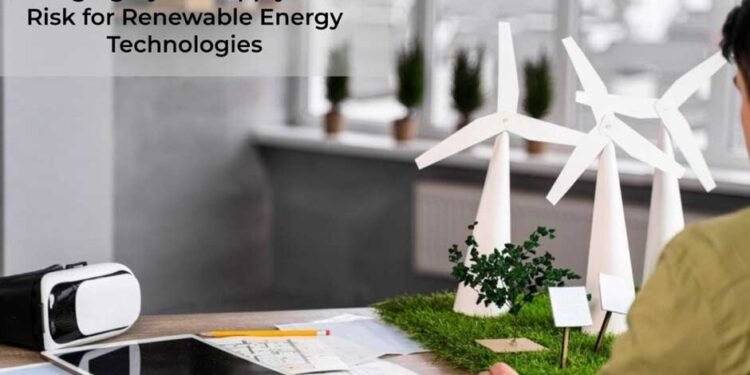Globally, switching to renewable energy is a top concern, but as our reliance on sophisticated technologies grows, so does the potential for cyber attacks. Renewable energy technologies are linked by a vast supply chain that spans from component manufacture to energy system operation, making each link a possible target for cyberattacks.
This paper examines the key concerns surrounding the management of cyber supply chain risks in renewable energy technologies and offers practical defense tactics.
Adhering to NERC CIP Standards for Enhanced Cybersecurity
Businesses in the renewable energy industry should adhere to nerc cip standards (North American Electric Reliability Corporation Critical Infrastructure Protection) to improve cybersecurity. These guidelines are designed to address weaknesses in control systems, physical security, and incident response procedures, safeguarding vital infrastructure, particularly renewable energy installations.
Adherence to NERC CIP guarantees that companies establish strong cybersecurity procedures throughout the supply chain, encompassing both software and hardware. Risks are reduced and the integrity of the electrical grid is preserved by regular audits and adherence to these requirements.
The Growing Cybersecurity Threat to Renewable Energy
A global, integrated supply chain is becoming more and more important to the renewable energy industry, which includes solar, wind, and energy storage technologies. As hackers target weaknesses in hardware, software, or logistics systems, the risk of cyberattacks increases due to this interconnection. These technologies are becoming more popular, which makes them more desirable targets for bad actors.
Cyber risks are becoming a bigger threat to components including power electronics, control systems, communication networks, and Internet of Things devices. Cyberattacks have the potential to cause serious economic and environmental repercussions and can vary from operational disruptions to complete system breakdowns.
Strong cybersecurity measures are becoming needed to safeguard these systems as renewable energy sources become more integrated into the global grid.
Identifying Cyber Supply Chain Risks in Renewable Energy
Cyber threats in the renewable energy industry are frequently concealed in the supply chain. The technologies’ hardware and software, as well as outside service providers and logistical companies, are among the many points of vulnerability that provide threats. Among the main topics of concern are the following:
Vulnerabilities in Software and Firmware:
Device firmware and energy management software may contain flaws that hackers could exploit to interfere with normal operations.
Compromise of Hardware Components:
Cybercriminals aiming to insert malicious malware or backdoors may target suppliers of hardware components like inverters, sensors, or wind turbine controls.
Supply Chain Transparency:
Critical technology may become vulnerable due to security flaws caused by a lack of awareness of suppliers’ and vendors’ cybersecurity policies.
Logistics and Transportation Threats:
Cyberattacks on logistics companies can interfere with the movement of vital parts like solar panels or wind turbines, causing delays in shipments or the introduction of malware.
Key Strategies for Managing Cyber Supply Chain Risks
A proactive, diversified strategy is needed to manage cyber hazards in the renewable energy supply chain. The following are important tactics to reduce vulnerabilities:
Conduct Thorough Supplier Risk Assessments:
Evaluate each third-party supplier’s and vendor’s cybersecurity posture. Verify that they adhere to accepted cybersecurity standards like ISO/IEC 27001 or NIST. Emerging risks can be identified through ongoing monitoring and routine audits.
Promote Industry Collaboration:
Participate in information-sharing programs with other renewable energy industry participants. Enhancing overall cybersecurity can be achieved through exchanging knowledge about cyber threats, weaknesses, and best practices.
Use Data Encryption and Secure Communication:
Make sure that secure communication protocols are put in place for remote monitoring and control, and that all data transferred between systems is encrypted. As a result, there is less chance of data breaches or illegal access.
Develop an Incident Response Plan:
Create a thorough incident response plan with detailed steps for handling supply chain cyberattacks. Clear channels of communication with suppliers and other stakeholders should be part of this to promptly mitigate and respond to cyber issues.
The Role of Cybersecurity in Product Design and Manufacturing
Cybersecurity must be embedded in the product lifecycle from the outset. Manufacturers of renewable energy technologies should prioritize security during the design phase to reduce the likelihood of vulnerabilities being introduced into hardware or software components. Here’s how:
Secure Product Design:
Implement safe coding techniques and take cybersecurity threats into account when designing energy management system firmware and software.
Manufacturing Oversight:
Ensure that manufacturers follow cybersecurity best practices and that any external vendors involved in the manufacturing process have undergone security risk assessments.
Embedded Security Features:
Include tamper-resistant features in hardware, such as secure boot processes and hardware encryption, to prevent unauthorized access or manipulation.
The Future of Cybersecurity in Renewable Energy Supply Chains
The complexity of the cyber threats facing the renewable energy industry will increase along with its growth. As energy management increasingly relies on automated systems, machine learning, and artificial intelligence (AI), new cybersecurity concerns will emerge, requiring more sophisticated defenses and monitoring systems.
Furthermore, the integration of smart grids and the increasing use of decentralized energy resources may open up new attack avenues. It will be crucial to continuously modify and enhance cybersecurity tactics as the industry develops to remain ahead of new threats.
The renewable energy sector can protect its infrastructure from changing cyber threats by incorporating cybersecurity into the supply chain and product lifetime. This will guarantee that energy production is safe, sustainable, and dependable.
FAQs
- Why is cybersecurity important for renewable energy technologies?
Cybersecurity is crucial to protect renewable energy systems from cyberattacks that could disrupt operations, damage infrastructure, and cause financial losses. The increasing interconnection of energy systems heightens the risk of vulnerabilities being exploited.
- How can companies assess cyber risks in their supply chain?
Companies should evaluate the cybersecurity practices of all suppliers through audits, risk assessments, and adherence to recognized frameworks like NIST or ISO/IEC 27001. This helps identify potential vulnerabilities within the supply chain.
- What role does NERC CIP play in renewable energy cybersecurity?
NERC CIP standards help ensure the security of critical energy infrastructure by outlining cybersecurity requirements for control systems, incident response, and asset management, promoting compliance and risk mitigation.












